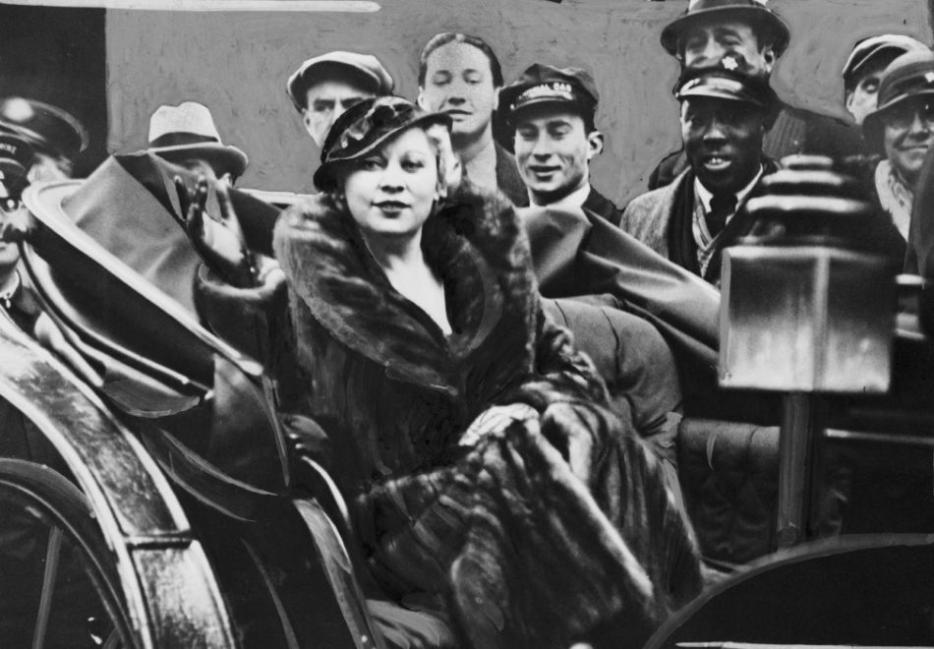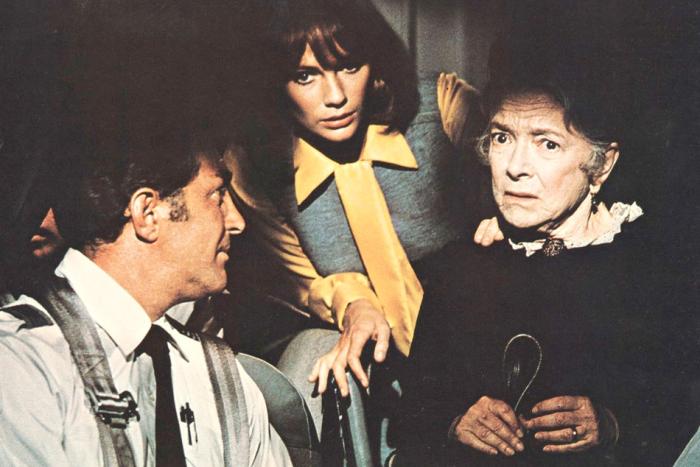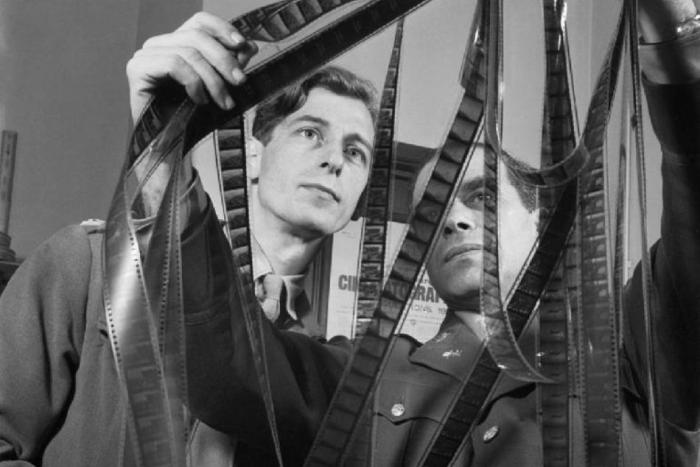At a Black History Month lecture last month, goaded by a question about the potentially “positive” consequences of gentrification, Brooklyn native Spike Lee launched into a hilarious but poignant attack on the gentrification of black communities in New York. Why,” Lee asked, “does it take an influx of white New Yorkers in the south Bronx, in Harlem, in Bed-Stuy, in Crown Heights for the facilities to get better?”
Despite his concerns about the allocation of city resources to poor neighbourhoods and the lack of affordable housing for black families, Lee seemed almost equally concerned about the banality of his new neighbours. “My father’s a great jazz musician. He bought a house in nineteen-motherfuckin’-sixty-eight, and the motherfuckin’ people moved in last year and called the cops on my father.” He went on: “[H]e doesn’t even play electric bass! It’s acoustic! We bought the motherfuckin’ house in nineteen-sixty-motherfuckin’-eight and now you call the cops? In 2013? Get the fuck outta here!”
Whether he realizes it or not (although he probably does, as he refers to gentrification as “the motherfuckin’ Christopher Columbus syndrome”), Lee is giving voice to a struggle that’s been ongoing in America since the Pilgrims landed on Plymouth Rock in 1620: on one side, prudish, moralizing social elites, and on the other, the disadvantaged lower classes who non-violently undermine their oppressors by having fun. In American Fun: Four Centuries of Joyous Revolt, John Beckman details the role of fun—not entertainment or amusement, but fun—throughout American history, and its importance in confronting social and political barriers between classes, races, ethnicities, genders, and generations. Fun, according to Beckman, “is one pleasure that can’t be felt. Fun, like sex, must be had.” Nothing can bring together antagonistic forces like fun, and sometimes, “rebellion is just the best reason to party.”
So, what’s fun? Beckman narrows it down to “the active enjoyment of: stunts, pranks, hoaxes, jokes, mock trials, parties, troublemaking, dancing, protests, fights, and ad hoc games of gambling and sports.” Makes sense. But, perhaps more importantly, who is fun? Inspired by Beckman’s work, here are the funnest people in American history.
--
Thomas Morton
In the year 1626, Thomas Morton led a group of rebellious bondservants in forming Merry Mount, a drunk and horny rival settlement to the Plymouth Plantation. Unlike its Puritan neighbours to the south, Morton’s community encouraged revelry and gamesmanship, and had strong ties to the local Wampanoag people. Morton even encouraged his men to marry into the local tribe, claiming Wampanoag women were preferable to the Scottish or the Irish—as Beckman notes, “a bit of bigoted English misogyny that sent a strangely tolerant message.” Such fun couldn’t last, however, and a militia from Plymouth forced Morton and the merry men of Merry Mount back to England.
Samuel Adams
Unlike his uptight cousin John, Samuel Adams had no problem heading to the pub for a quick pint. As one of the key agitators for American independence, Adams realized the revolutionary potential of Boston’s working class; he could often be found fraternizing with the “Jack Tars” of Boston Harbor in any one of the city’s many pubs and taverns. Adams’ efforts to “rustle up radicals from the sleep population” were largely responsible for igniting public dissent that found its expression in the Boston Tea Party, a remarkably fun protest with the goal of turning Boston Harbor into a “tea-pot.”
King Charles
In the early 1800s, The Northeastern states celebrated Pinkster Days. Originally meant to recognize the Dutch Pentecost, slaves were permitted an unusual degree of freedom during the festival, which they used to host city-wide parties full of music and dancing that were so infectious and fun, even white people couldn’t resist joining in. Presiding over Pinkster Days in Albany was an enigmatic figure by the name of “King Charles,” a black sovereign lifted up on his chair to rule over the multi-racial revelry. King Charles’ identity remains uncertain, but he was likely a slave for most of the year, elevated to the role of monarch for a few short days annually, both a symbol and a shining example of the democratic power of fun.
Mark Twain
Before he adopted the name “Mark Twain,” the Missouri-born humorist born Samuel Clemens was simply known as “Josh,” spreading tall tales and exaggerated “reports” about Western mining towns for the Territorial Enterprise in Nevada. Twain’s activities at this time would make any respectable journalist uncomfortable: he trumped up statistics, traded puff pieces for free hotel rooms, and hoaxed his readers with stories about grave-robbing hyenas and gruesome murders. In other words, the young writer never let facts get in the way of a good time. As “Josh” turned into “Mark Twain,” he learned to use his position to skewer politicians, attack authority, and offend the sensibilities of his more prudish readers. These qualities came in handy in the roughneck mining towns where he made his name, but also when he took on issues of race and political authority in his later works. Never patronizing or pretentious, Twain’s work is a fine reminder that one can always have fun even while breaking ground.
Buddy Bolden
Jazz music is said to have originated in the brothels of the seedy Storyville neighbourhood in New Orleans. This may or may not be true, but one of the first artists to be recognized as an innovator of jazz was Buddy Bolden, a Big Easy horn player who caused feet to stomp with music that was “disreputable, low-down, and dirty.” Bolden’s most famous creation was the song “Funky Butt,” a “young black rebels’ anthem” that inspired a scandalous new dance among the black working class of New Orleans. Bolden only ever made one recording, and it has since been lost, but the jazz culture he pioneered would go on to define fun in the 20th century, for working-class blacks and bourgeois whites alike.
Bessie Smith
During the Harlem Renaissance of the 1920s, the intersection of 135th Street and Seventh Avenue was known as the “Campus,” where celebrities could commonly be seen walking amongst the people, from jazz clubs to speakeasies to illegal Harlem rent parties. Some of these celebrities were interloping white folk from below 11th Street, spending their nights in Harlem, but others, such as “Empress of the Blues” Bessie Smith, were part of the African-American community. Exemplifying the jazz age in Harlem, Smith was hard-drinking and promiscuous, with several female lovers in addition to a husband (who she once fired a gun at), and a flat in Detroit where she performed sex shows. She sang about her life, including violence, promiscuity, and hardship, crying lines like, “Gimme a reefer and a gang of gin / Slay me ‘cause I’m in my sin” in some of her more explicit tunes. But she was also hugely popular, selling out white theatres as well as black, and becoming one of the most popular blues singers of the prohibition era.
Mae West
Mae West is remembered as the Hollywood sexpot who broke taboos by telling men to “come up some time and see me” in She Done Him Wrong.But West’s sexuality had already been diluted by the time she arrived in Hollywood. Prior to that, she starred in several of her own salacious off-Broadway plays, first as a flapper, and then as a sex worker. West skewered social mores and gave moral high ground to sexually liberated women, prostitutes, and homosexuals, making her a target of social critics and the NYPD’s vice squads. The suffragette movement at the time was linked at the hip with temperance, the driving force behind prohibition. West and her diverse group of partying, sexually open friends explicitly rejected the fun-restricting beliefs of the Suffragettes, and in doing so, predicted the more liberated society demanded by the second-wave feminists that would gain prominence almost 40 years later.
Ken Kesey
In 1959, author Ken Kesey acquired LSD from CIA-funded laboratory experiments and distributed amongst his free-spirited friends at parties he called “Acid Tests.” For a 1964 trek across the country from California to New York, he formed “The Merry Pranksters,” a group that included, among others, the Grateful Dead, who would drive across America in a Day-Glo painted school bus, startling people along the way. The “Pranksters” dressed in flamboyant outfits, and gave themselves ridiculous names. Kesey himself, dubbed “Captain Flag,” wore gender-bending layers of pink: a miniskirt, socks, and sunglasses. Neal Cassady, the inspiration for Dean Moriarty in Jack Kerouac’s On the Road, drove the bus, earning himself the moniker “Sir Speed Limit.” Cassady’s presence was symbolically fitting, as Kesey acted as a link between the angst of the Beat Generation and the liberated, fun-loving (and politically active) hippie culture that followed.
Afrika Bambaataa
In 1971, Afrika Bambaataa led a violent Bronx street gang known as the Black Spades. When DJ Kool Herc inadvertently created hip-hop at a neighbourhood party in 1973, Bambaataa followed suit, incorporating a black pride philosophy into the new genre. Soon, the Black Spades became “Universal Zulu Nation,” spreading “peace, love, unity, and having fun” but maintaining a resistance to the oppression of black communities. Afrika Bambaataa and the other DJs of that time period, Kool Herc and Grandmaster Flash, kept youth out of trouble by channeling their competitive spirits into rap battles, breakdancing competitions, and the graffiti art. In the meantime, they also created hip-hop, which, after the Sugar Hill Gang put out their first record, would become a mainstream cultural juggernaut.
Bikini Kill
In 1990, four feminist punk zine writers in Olympia, Washington, formed Bikini Kill, going on to become the most prominent example of the ’90s riot grrrl movement, incorporating a do-it-yourself ethic and radically feminist lyrics into punk. While third-wave feminism was bringing women of colour and the LGBT community into its ranks, Bikini Kill and the rest of riot grrrl were putting on shows, knocking out catchy tunes, taking the punk scene back from the masculinized hardcore of the ’80s and, at one point, getting punched in the face by Courtney Love. While much of punk went mainstream in the 90s, due to the success of pop-punk groups like Green Day and The Offspring, Bikini Kill was making sure that the genre kept its political edge, even if they were using power chords and catchy hooks, making sure people enjoyed themselves while they were doing it.
Image via






